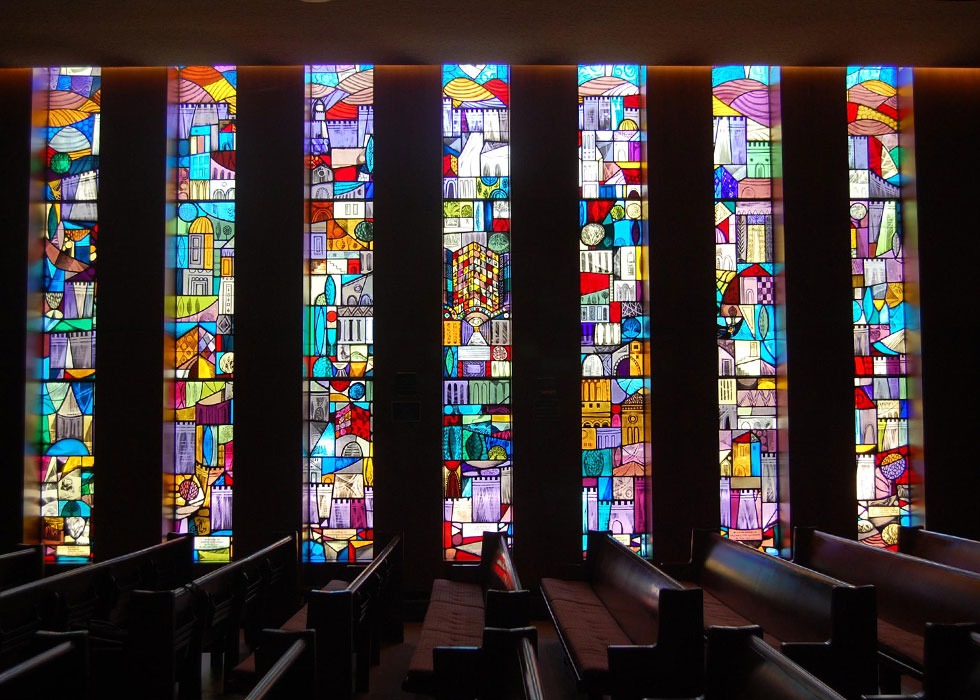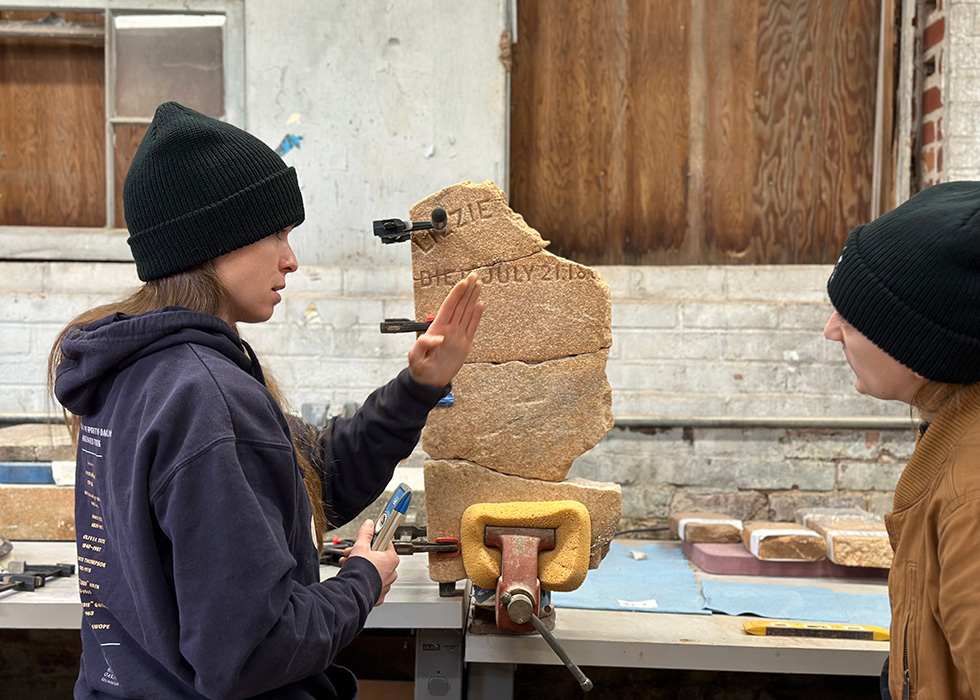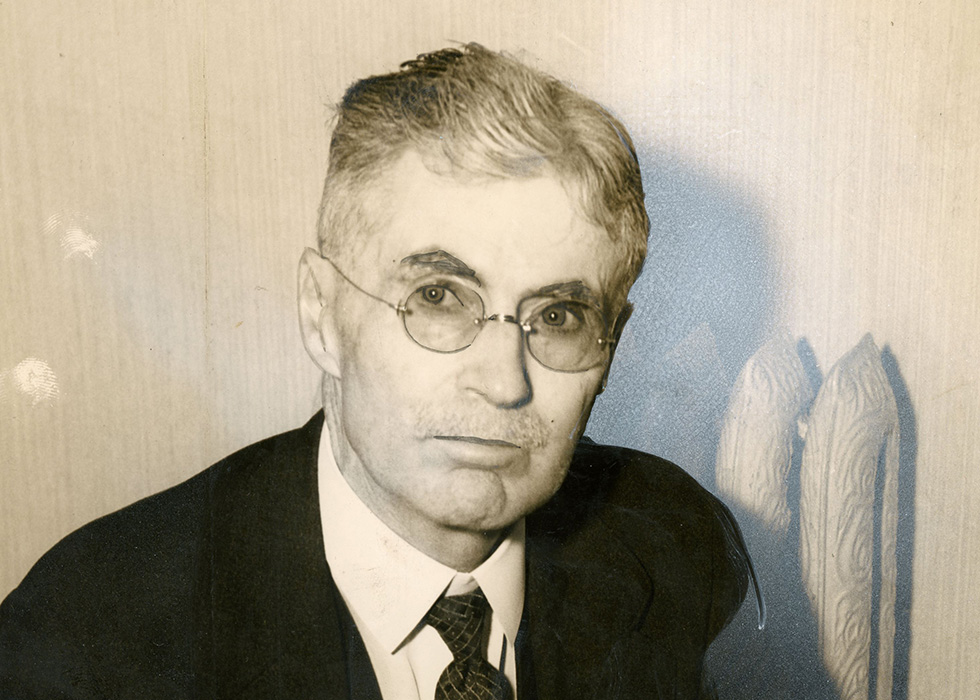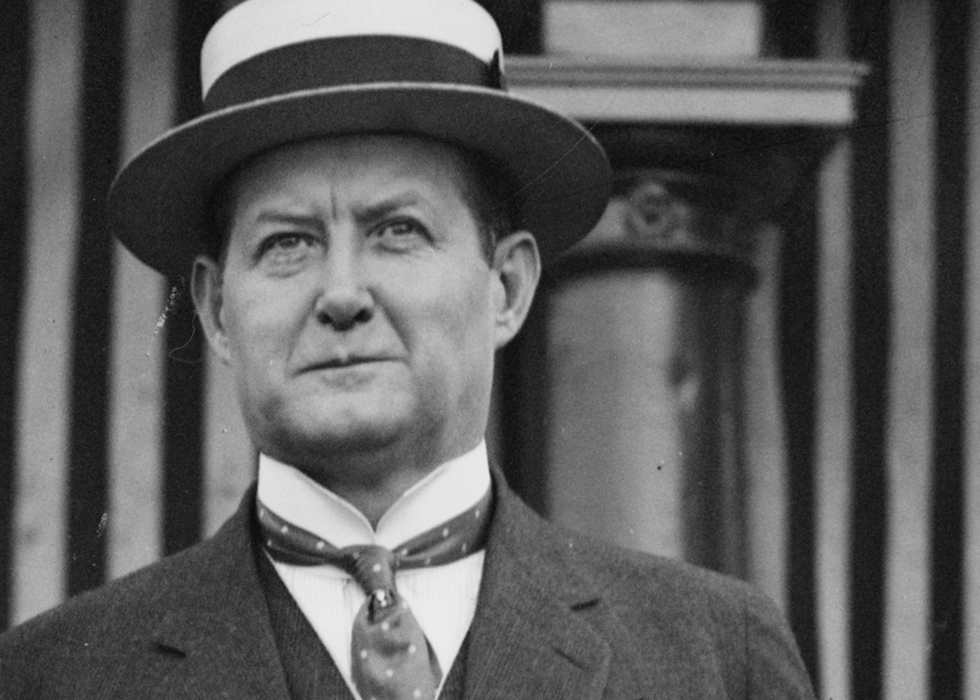
Resident Spotlight: Andrew Steiner, Member of Jewish Resistance, Architect
Andrew Steiner was born on August 22, 1908, in Dunaszerdahely, Austria-Hungary (present-day Dunajská Streda, Slovakia). His parents, Arpad and Adele Steiner, were both Jewish. Although known by many names – Andrej, Andse, and Endre – he is most often remembered as Andrew Steiner, a renowned architect, Holocaust survivor, and resistance hero.
Steiner was educated at Hungarian schools in Eperjes (now Prešov, Slovakia) and Pozsony (now Bratislava, Slovakia). He started school at the German Technical University in Brno, Czechoslovakia in 1925 and graduated with an architectural degree in 1932. He apprenticed for the famed architect Ernst Wiesner and opened his own shop after completing his apprenticeship in 1934. Along with another architect, Endre Szonyi, Steiner published an architectural magazine in Bratislava, the Forum, between 1931 and 1938. Steiner married Hetty Weiner on October 27, 1935. Their first son, Peter, was born on November 18, 1937.
In 1939, the Slovak state declared independence from Czechoslovakia and allied itself with Nazi Germany. The state began to persecute Jews. Steiner, his wife, and their young son moved from Brno to Bratislava in 1940 to escape the Nazi invasion and Jewish persecution. However, Steiner was briefly imprisoned in a Nazi concentration camp in 1940.
 Upon his release, he was forced to join the Ústredna Židov. The Ústredna Židov was the Judenrat in Bratislava, a council within the Jewish community forced to implement Nazi orders to control Jewish populations in occupied areas. Steiner helped to set up labor camps for Jews in hopes that they would not be deported to Auschwitz or other death camps by the Slovak authorities. Roughly 4,000 people were sent to live and work in the labor camps. In 1942, the fears that the Slovak authorities would deport Jews came true and about two-thirds of the Slovak Jews were deported. Most of those in the labor camps were spared.
Upon his release, he was forced to join the Ústredna Židov. The Ústredna Židov was the Judenrat in Bratislava, a council within the Jewish community forced to implement Nazi orders to control Jewish populations in occupied areas. Steiner helped to set up labor camps for Jews in hopes that they would not be deported to Auschwitz or other death camps by the Slovak authorities. Roughly 4,000 people were sent to live and work in the labor camps. In 1942, the fears that the Slovak authorities would deport Jews came true and about two-thirds of the Slovak Jews were deported. Most of those in the labor camps were spared.
Steiner was a member and key leader of the Bratislava Working Group, the local resistance movement. In an effort to save Slovakian Jews from deportation and death, Steiner bribed SS official Dieter Wisliceny, the Judenberater (an SS leader who supervised the deportation of Jews) for Slovakia. The initial negotiations with Wisliceny were done by Karol Hochberg, a collaborator within the Ústredna Židov. Steiner distrusted Hochberg and believed he was embezzling some of the money used to turn Wisliceny. Steiner provided evidence against Hochberg to the Slovak police, which led to Hochberg’s imprisonment. Steiner was then chosen to take over negotiations with Wisliceny.
The negotiations with Wisliceny eventually failed in September 1943. The Nazis did not intend to halt the deportations or release Jews from the camps. The Slovak National Uprising broke out in August 1944 and Steiner and his family fled to the mountains for safety. After the war’s end and the liberation of Slovakia in early 1945, Steiner resumed his architecture career and even ran a center for Jewish children.
…Steiner established himself as a renowned architect with a variety of unique projects and designs. His projects ranged from houses to the Ahavath Achim Synagogue
As the Iron Curtain fell across Europe, the Steiner family chose to immigrate West. Andrew, Hetty, and their two sons, Peter and George, lived in Cuba until 1950. The family then moved to Atlanta where Steiner established himself as a renowned architect with a variety of unique projects and designs. His projects ranged from houses to the Ahavath Achim Synagogue. He worked with Robert and Company Associates throughout the 1960s and taught the next generation of architects as a university lecturer. Steiner also served as the vice president of the Urban Design Department of the American Institute of Planners.
Steiner was the last surviving member of the Bratislava Working Group. A 1999 documentary film, Andre’s Lives, explored Steiner’s heroic efforts to save thousands during the Holocaust. The film followed Steiner and his sons on a trip to Slovakia to discuss his wartime experiences. His legacy has been included in many historical works.
Andrew Steiner died on April 2, 2009, in Atlanta at 100-years-old. He was preceded in death by his wife, Hetty, and two sons. He is survived by his multiple grandchildren and great-grandchildren. Steiner was buried in Oakland Cemetery in the Jewish Flats section.

feature photo courtesy Ahavath Achim Synagogue



